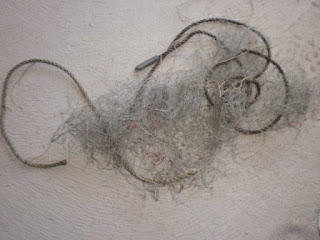Recently
I had the pleasure to sail for half day on a beautiful sailing boat called the
Yukon from Eden. The Yukon is calling for people passionate about seabirds,
sailing and the impacts of plastic in our oceans. The Yukon (originally known
as Elly) was built in 1930 in Fredrikshavn north of Jutland. She was a Danish
fishing trawler until 1974 where she was renamed Yukon and became a pleasure
sailing boat. Current owners are David and Ea Nash and she is based in
Tasmania.
We saw
loads of Australian Gannets and Common Dolphins who were frantically feeding on
a school of fish, they were joined by New Zealand Fur Seals, Shy Albatross,
Yellow -nosed Albatross, Diving Petrels, Brown Skua and a Wedge
tailed-shearwater. And of course we trawled for plastic which we snagged very
little of, however it depends on the currents and wind. We did manage to catch
lots of jellies, phytoplankton and zooplankton which is attracting a lot of
interest from our marine species.
The Yukon
is part of the East Coast Odyssey’s whose mission, under the supervision of
Monash University’s Jennifer Lavers is to collect data on the millions of
multi-coloured plastic remnants killing marine wildlife off Australia’s
spectacular east coast. The impacts are unknown and this is the first time this
type of work has been undertaken.
The East
Coast Odyssey is working in partnership with the Two Hands Project, who are
running lands-based community events throughout the expedition. Two Hands
embodies the spirit of the huge national/international clean up days but asks
what you can do with your two hands, in 30 minutes, at a location near you. Two
Hands takes it back to grass roots, looking at what you can do to care for
where you live.
Links to
Two Hands Project www.twohandsproject.org
And East Coast Odyssey http://eastcoastodyssey.wildiaries.com/
Penny
 |
| Photo courtesy of the East Coast Odyssey |
 |
| Photo courtesy of the East Coast Odyssey |
 |
| Photo courtesy of the East Coast Odyssey |
 |
| Photo courtesy of the East Coast Odyssey |
 |
| Photo courtesy of the East Coast Odyssey |



